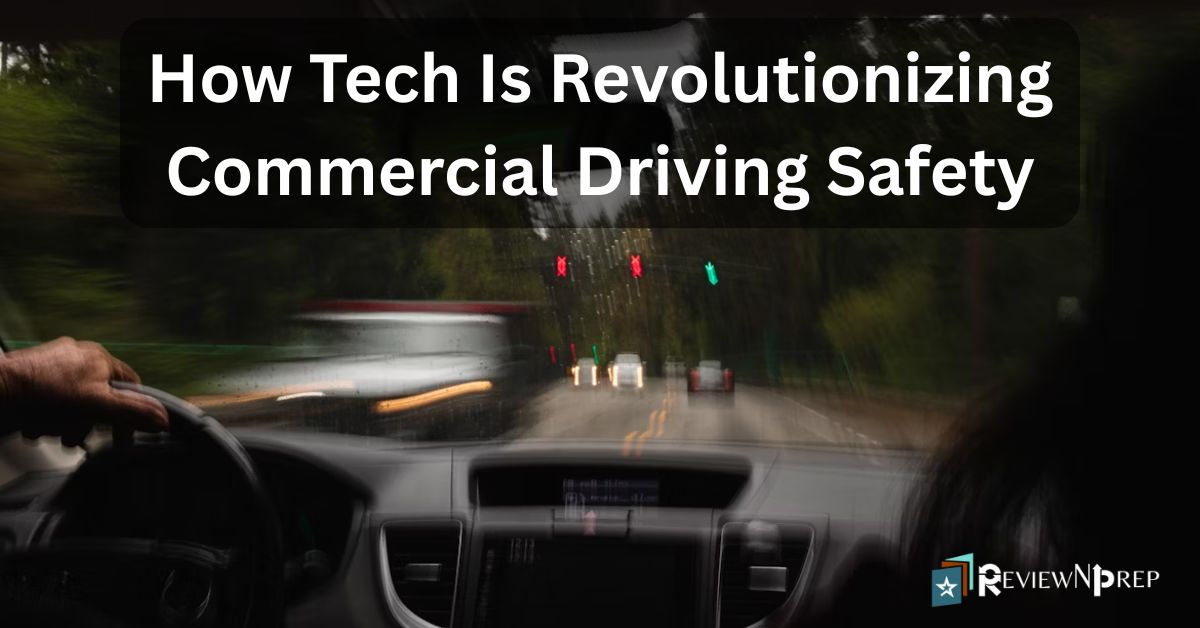Commercial driving demands constant focus, patience, and skill. Long hours behind the wheel, variable road conditions, and pressure to meet delivery schedules all increase the likelihood of accidents and other safety issues. With these concerns in mind, technology has stepped in to support drivers and companies alike. New tools are changing how drivers monitor their performance, maintain their vehicles, and handle emergencies.
These advances don’t remove the human factor but provide meaningful support that can reduce risks and improve daily operations. Across the transportation industry, safety measures are no longer limited to training and policies; now, they extend into real-time digital solutions that reshape how the road is experienced.
Monitoring Drivers Through Dash Cams and GPS
One of the most visible and widely adopted safety tools is the dash cam. These devices have moved beyond basic video recording and now serve as sophisticated monitoring systems. Many companies now rely on dash cams with GPS tracking capabilities to gain insights into their fleet’s behavior. Positioned discreetly in commercial vehicles, these devices can capture incidents, monitor speed, and verify routes taken during each journey.
With GPS integration, managers can pinpoint the location of a vehicle at any time, offering both security and accountability. When incidents occur, the recorded footage becomes a reliable source of truth, helping settle disputes and support insurance claims. This combination of video and tracking not only strengthens safety procedures but also encourages drivers to follow best practices on the road.
Advanced Driver Assistance Systems (ADAS)
Advanced Driver Assistance Systems, or ADAS, are now standard in many commercial vehicles. These systems include forward-collision warnings, lane-departure alerts, and blind-spot monitoring. Sensors and cameras installed throughout the vehicle gather data that’s processed in real time, offering immediate feedback to drivers.
A small deviation from a lane or the approach of another vehicle too quickly will trigger alerts. These aren’t distractions; they serve as early warnings. For truckers driving in low visibility or navigating heavy traffic, such assistance can make a major difference. ADAS functions quietly in the background, supporting rather than interrupting the driver’s focus. Over time, this tech can prevent incidents that would have once seemed unavoidable.
Telematics and Predictive Maintenance
Commercial vehicles are outfitted with sensors that collect performance data during each trip. Through telematics systems, that data is sent to centralized software platforms that analyze it continuously. From engine performance to tire pressure, these systems can highlight issues long before a breakdown happens. Predictive maintenance uses patterns in the data to forecast future problems, allowing for repairs to be scheduled before they become emergencies.
Brake wear, coolant levels, and oil quality can all be tracked with precision. Drivers are notified of urgent issues, and fleet managers can prioritize maintenance across dozens or hundreds of vehicles. This shift from reactive to proactive service has led to fewer on-road failures and more confidence in every vehicle’s condition.
Fatigue Monitoring and Driver Wellness Tools

Driver fatigue remains one of the leading causes of commercial vehicle accidents. While mandatory rest breaks help, technology offers more dynamic solutions. Fatigue monitoring tools now use facial recognition and eye movement detection to gauge a driver’s level of alertness. These systems can identify drooping eyelids, long blinks, or head-nodding patterns that signal drowsiness. Once detected, alerts sound immediately to prompt the driver to take a break.
Some vehicles are equipped with seats that vibrate or steering wheels that pulse, reinforcing the alert through physical cues. Combined with apps that encourage hydration, physical movement during breaks, and mental check-ins, these tools promote healthier driving habits. The focus is not just on preventing a single accident but supporting long-term wellness.
Training Simulators and Virtual Learning
Before new drivers ever take the wheel, training simulators offer a controlled way to experience various road conditions and hazards. These programs recreate urban, rural, and highway settings complete with unpredictable traffic, weather shifts, and potential emergencies. Trainees learn how to respond calmly and correctly, building muscle memory without real-world risk.
Virtual reality (VR) simulators are particularly effective, immersing drivers in scenarios that mimic the stress of real driving. Beyond initial licensing, ongoing training is often delivered through mobile platforms. Drivers can access updated lessons, refresher courses, and safety briefings at their own pace. This access means that learning becomes a continuous part of the job rather than a one-time requirement.
Final Thoughts
Technology has not replaced the skill and responsibility required in commercial driving, but it has added valuable layers of protection and support. As more fleets adopt these innovations, the overall culture of commercial driving continues to shift toward prevention and preparedness. The road ahead may still present challenges, but with the help of the right tools, it can be navigated more safely and with greater peace of mind.
Further Reading:
How AI-Powered Study Assistants Are Reshaping Online Learning
Future of Digital Presentations: How AI Voice Technology is Redefining Content Delivery

